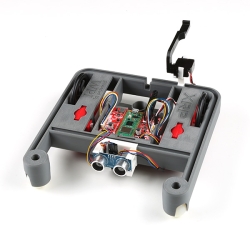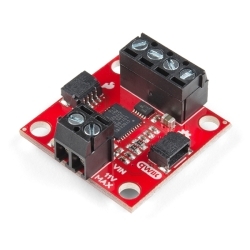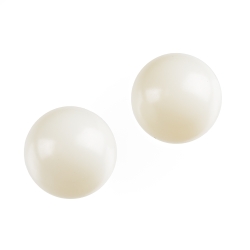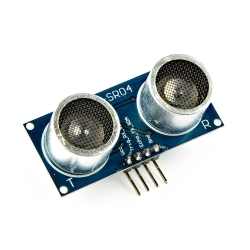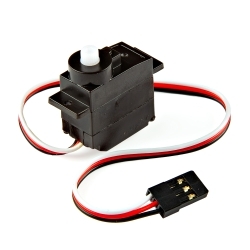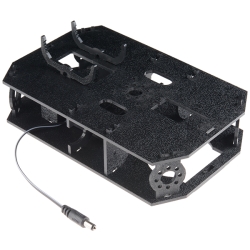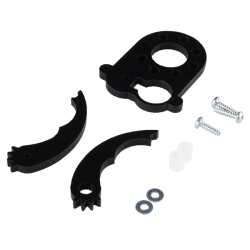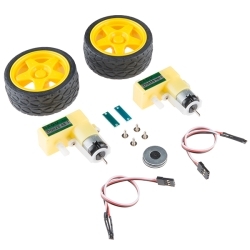SparkFun Experiential Robotics Platform (XRP) Controller
The XRP Controller, driven by an RP2350 dual-core processor, serves as the brain of your XRP robot, enabling complex functions and seamless control.
Helpful Documentation
Product Overview
The Experiential Robotics Platform (XRP) is a hands-on, comprehensive robotics platform. It includes everything needed to build and program a robot to perform beginner through advanced tasks - building the foundation for innovative thinking, science, engineering, and problem-solving. The platform focuses on four pillars:
Hardware Kit: Easily assemble a robust and expandable robot platform with tool-free construction and versatile integration for sensors and actuators.
Programming Environment: Utilize a multi-language coding experience with Blockly, Python, and WPILib, providing a user-friendly interface for all skill levels.
Online Modules and Projects: To master robotics concepts, follow a structured learning path with engaging challenges and comprehensive resources.
Technical Forum: Access community-driven support, expert assistance, and collaborative opportunities within a dedicated technical forum.
The SparkFun XRP Controller is significantly improved over the Beta XRP Controller! It features a Raspberry Pi® RP2350B dual-core processor; 16MB of flash and 8MB of PSRAM; low-power accelerometer + gyroscope 6-DoF IMU (LSM6DSOX from STMicroelectronics®); two Qwiic® connectors for easy integration of sensors and accessories; two dual-channel motor drivers for four motors total; four servo headers; a user button; a full-color RGB LED, and more. Wireless connectivity is available via a Raspberry Pi® RM2 radio module, enabling 2.4GHz WiFi and Bluetooth for remote control and IoT projects.
The Controller Board now features a pair of 2x20 expansion headers that allow for even more customization, either through existing and future expansion boards or your custom additions. These headers connect to nearly all the usable pins on the RP2350 and RM2, so some are shared between the other connectors (motors, sensors, etc.). Make sure to take care when using these shared pins. The inner row of the expansion header matches the pinout of a Raspberry Pi Pico 2 (except for the analog-to-digital pins); users can plug Pico accessory boards into those connectors, with some exceptions.
The Qwiic connectors offer endless customization possibilities. This simple interface makes adding sensors and accessories easy, allowing you to tailor your robot's capabilities to your needs. No soldering is required to connect it to the XRP Controller!
The XRP Controller Board caters to all skill levels. Choose from beginner-friendly Blockly or dive deeper with Python. Even FIRST® Robotics enthusiasts can program their creations using familiar tools. With multiple programming options available, the possibilities are truly endless.
Everything you need for your XRP project is at xrp.experiential.bot. Access the hardware information, programming tools, online learning, and community support through the technical forum. Find assembly guides, 3D-printable designs, and ideas for advanced projects all in one place.

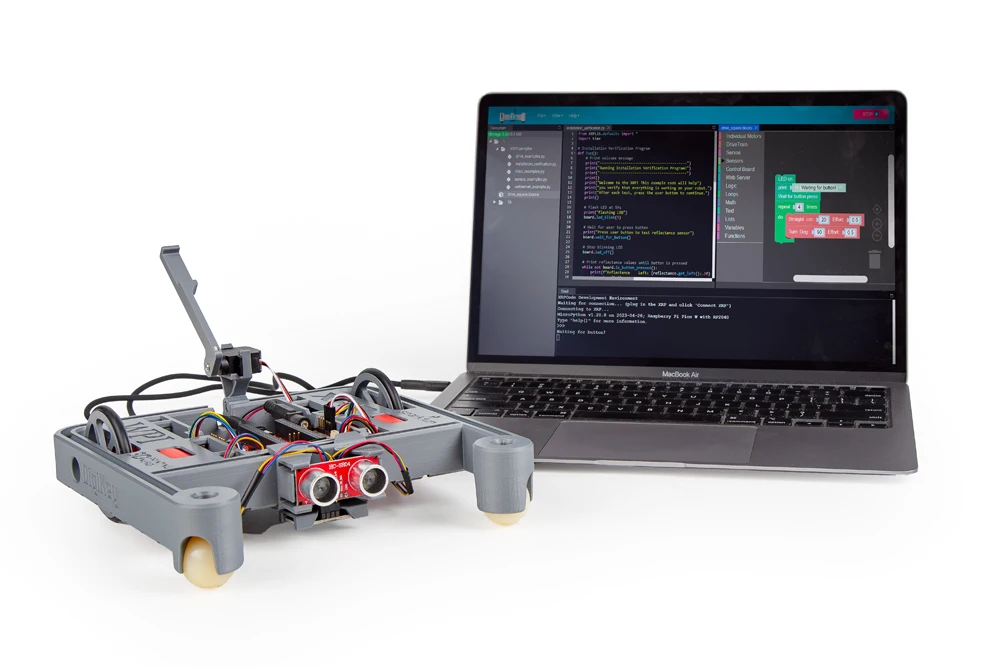

Streamlined User Experience:
XRP comprises four main elements - the hardware kit, online modules, programming environment, and technical forum; the integration of these four components has been streamlined for improved access and overall ease of use.
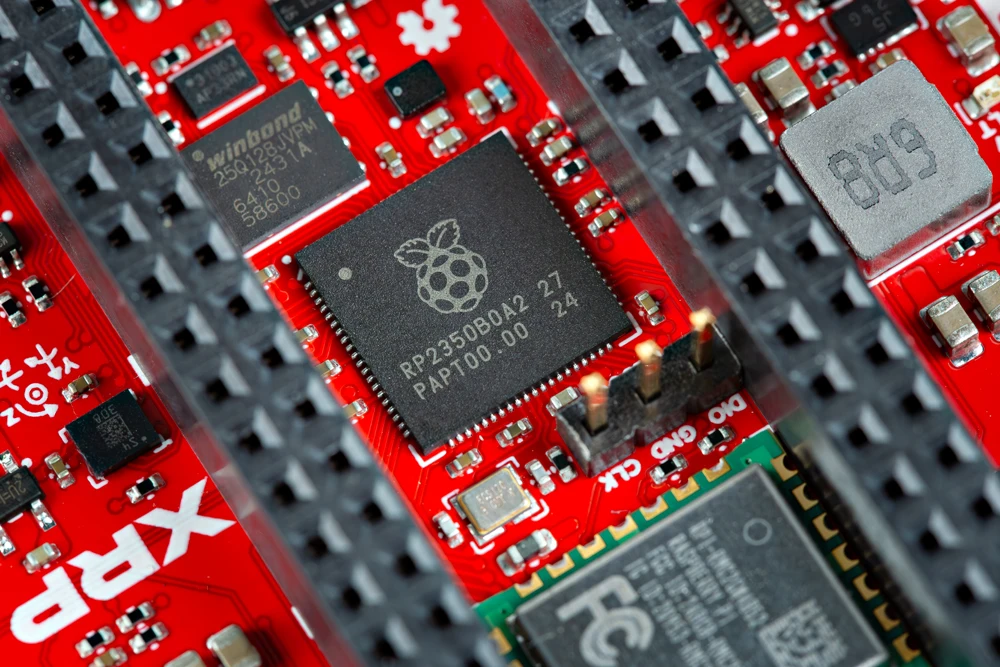

Enhanced Processing & Memory:
The new XRP Control Board features the RP2350B dual-core processor, providing significantly faster performance and expanded memory (16MB Flash, 8MB PSRAM). This allows for more complex programs and the ability to handle larger datasets, including images.
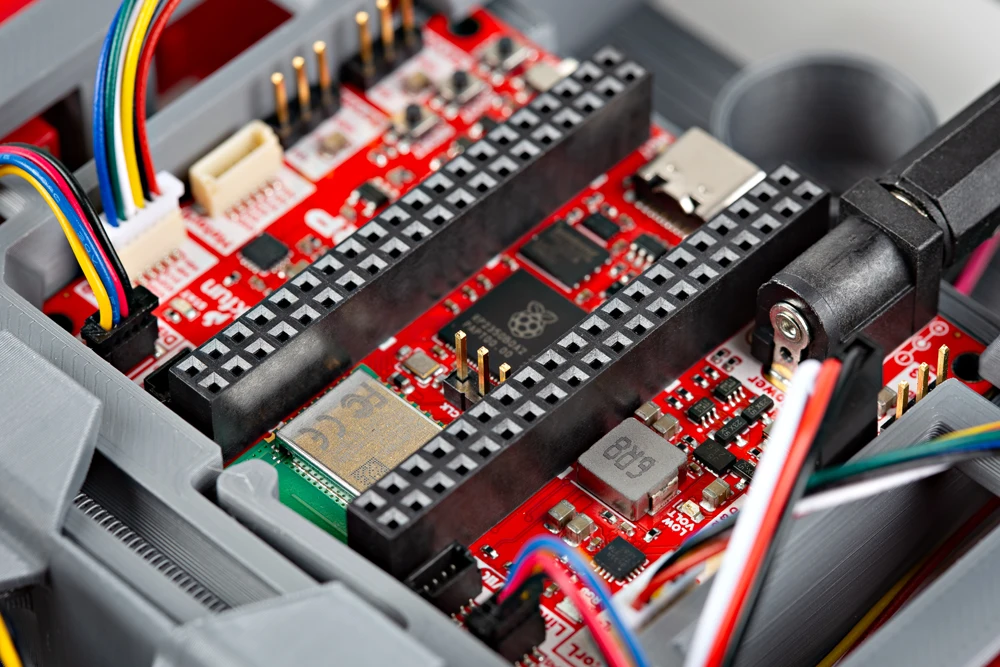

Expanded Connectivity & Expansion:
Increased GPIO pins (48 total, eight are reserved exclusively for the user), versatile expansion headers compatible with Pico add-on boards, and additional Qwiic connectors significantly enhance electrical connectivity. The RM2 module integrates Wi-Fi and Bluetooth to facilitate wireless control and IoT projects.
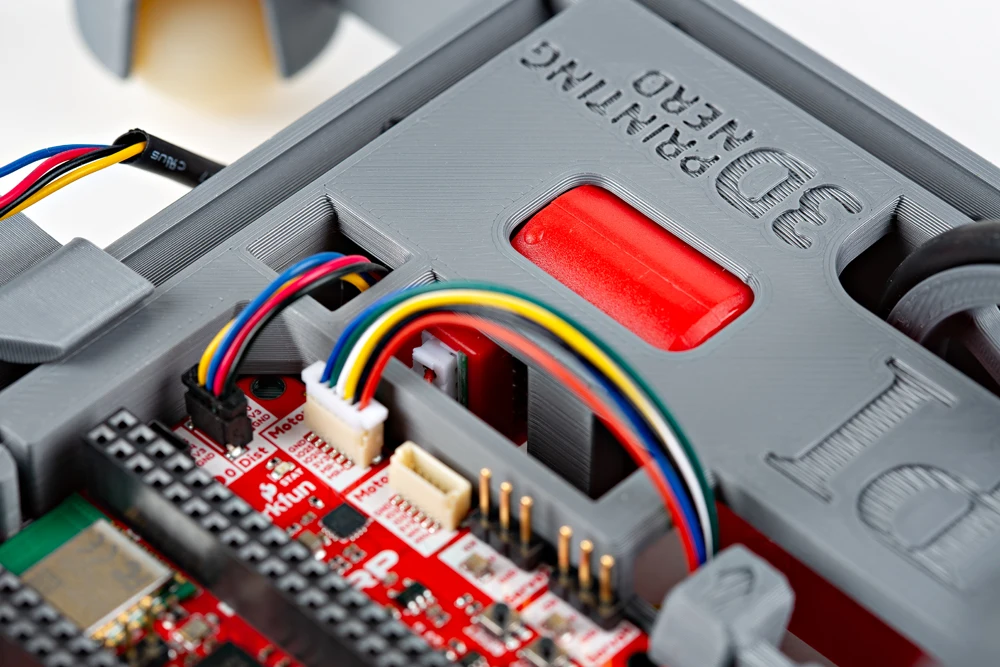

Advanced Motor and Servo Control:
New motor drivers with current measurement enable precise torque control, and the number of servo connectors has been doubled to four, allowing more advanced mechanisms.


Improved Controller User Interface:
The control board features a streamlined user interface with a more accessible power switch and button cluster, a modern USB-C connector, a low-voltage indicator, and an RGB LED for user feedback. The design is fully open-source (KiCad).
Features & Specs
Raspberry Pi RP2350:
- Dual ARM CortexM33 and Hazard3 RISC-V Processors
- User-selectable for dual-cores
- 520kB integrated SRAM in 10 banks
- 3.3V-tolerant GPIO
- Peripherals
- 2x UART
- 2x SPI
- 2x I2C
- 24x PWM Channels
- 12x PIO State Machines
- 1 HSTX (High-speed transmit)
Raspberry Pi Radio Module 2:
- WiFi 4
- Bluetooth 5.2
- BDR (1 Mbps)
- EDR (2 or 3 Mbps)
XRP Controller:
- LSM6DSO 6DoF IMU
- 2x DRV8411A H-Bridge Motor Drivers
- 4x DC Motor Connectors
- 4x Servo Motor Connectors
- 2x Vertical Qwiic Connectors
- 1x Line Follower Connector
- 1x Range Sensor Connector
- 2x 40-pin Expansion Headers
- 1x 3-pin Debug Header
- 16MB Flash
- 8MB PSRAM
- Power
- Barrel Jack
- USB-C
- Power Switch
- Buttons
- RESET
- BOOT
- USER
- LEDs
- SYS - Red 3.3V Power Status LED
- MOT - Red 5V Power Status LED
- LOW VOLT - Red Battery Voltage Indicator LED
- STAT - Blue LED connected to RM2 IO0
- RGB - WS2812 RGB LED DataIn connects to RP2350 IO37
Documentation
Datasheets
XRP Robotics Platform Home Page (Online Modules, Coding Environment, and More Detailed Information)
Customer Reviews

Stock and Customer Discounts
Available Discounts
- $50.30| 10+ units
- $47.66| 25+ units
- $45.01| 100+ units

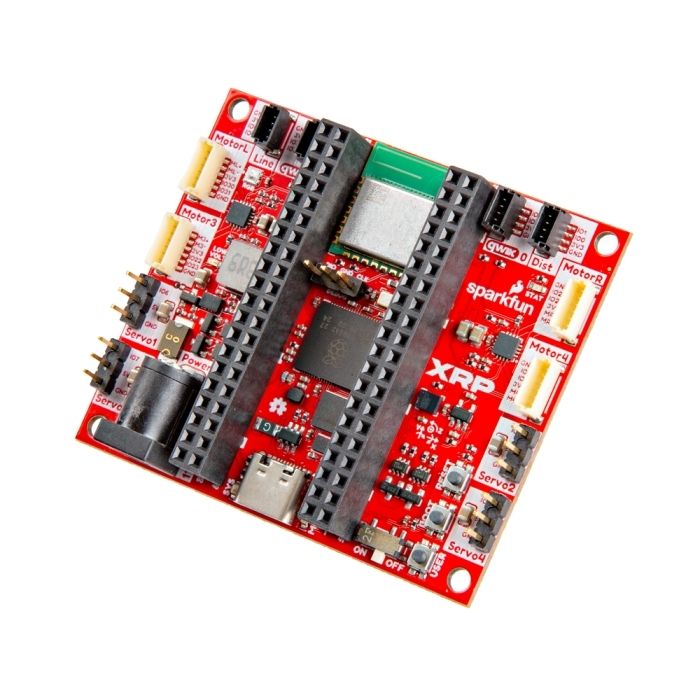
 Hardware Overview
Hardware Overview Schematic
Schematic


